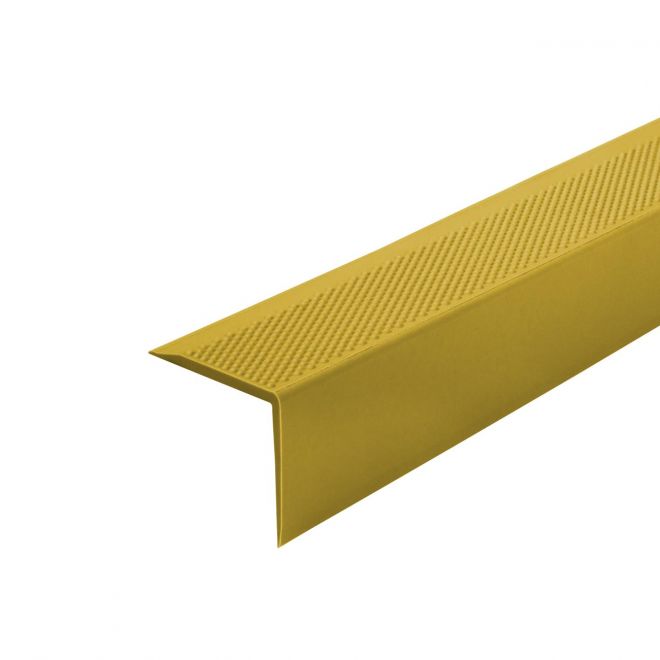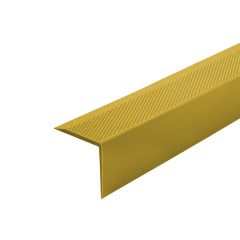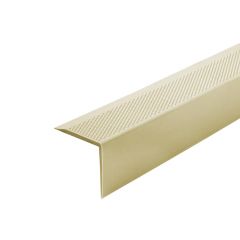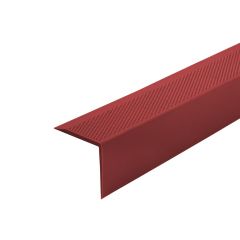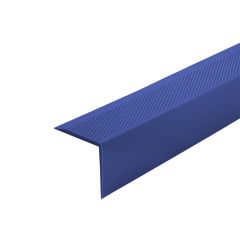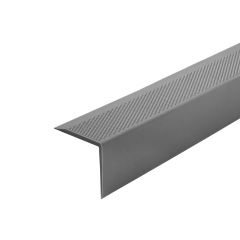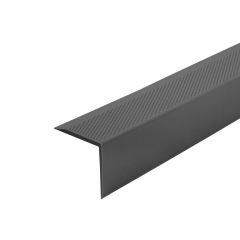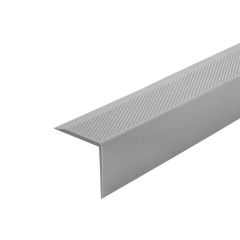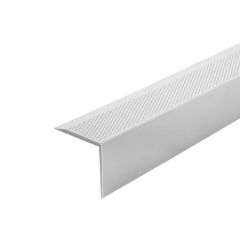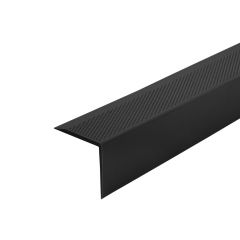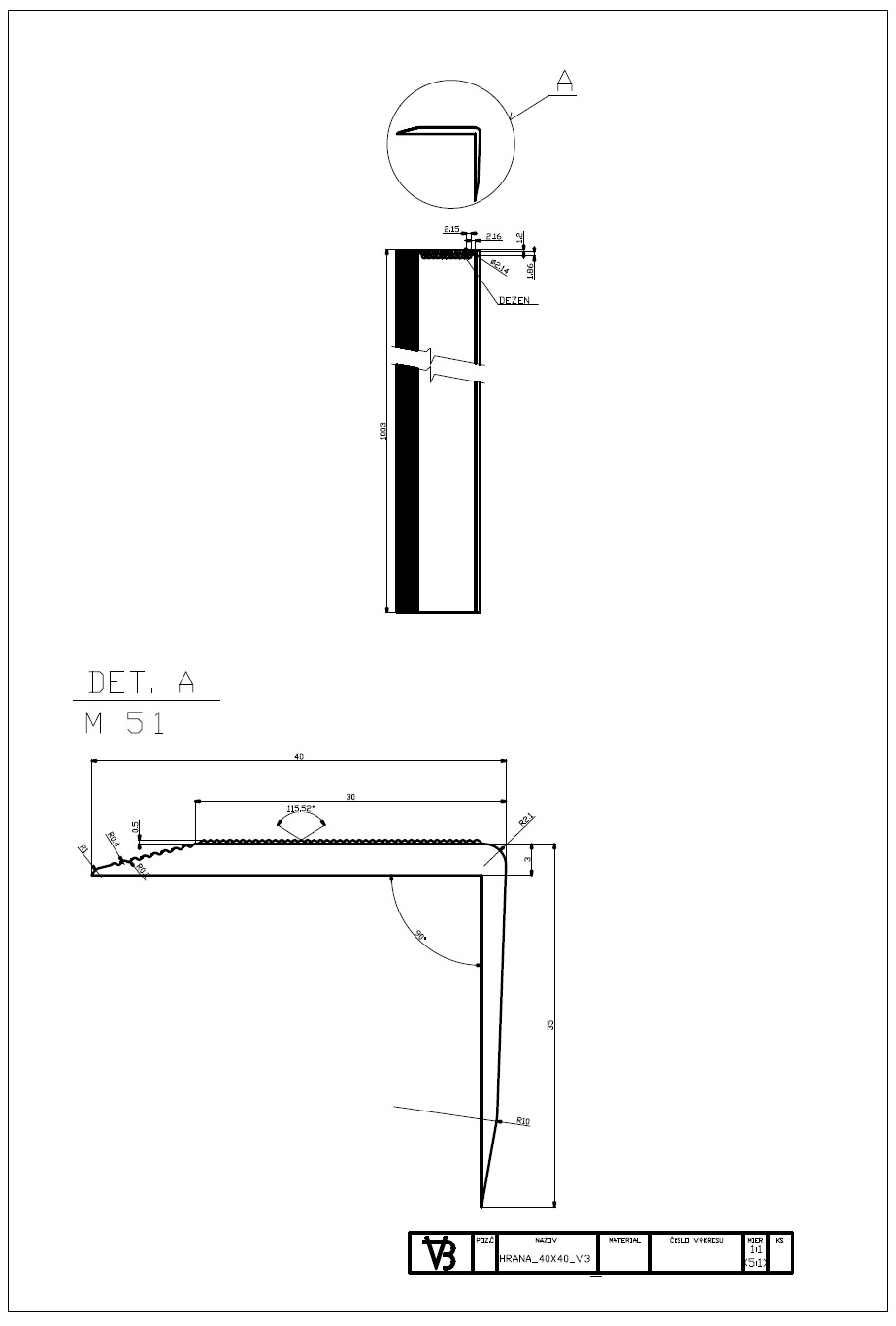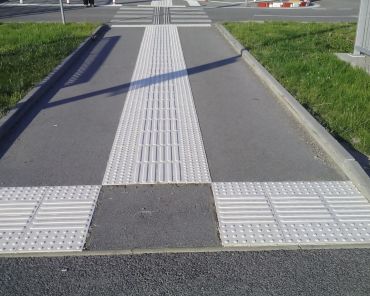TPUH stair nosing1000 mm
Polyurethane stair nosing, grooved surface of the tread side
Sign up
and get discount
Polyurethane stair nosings
Understanding why we slip on the stairs - the first step in preventing accidents.
The most serious injuries on the stairs occur during going down. They also occur on while going up, but their incidence is small and injuries are less severe in these cases. The cause of accidents when going down the stairs is divided into:
- Overstepping - when we do not identify the tread part of the step and step into the space in front of the step.
- Slipping - when there is not enough friction in the contact point of the step and our foot, we slip on the step.
If we can mitigate the causes of these two problems on the stairs, we will significantly increase safety and prevent almost all of these accidents. We will therefore find out how this can be done.
OVERSTEPPING
Overstepping occurs more often on narrow steps, which are usually also very steep. The foot is forced to tread on the step significantly forward and in low light conditions, or when all the stairs are the same colour, it is very easy to make a mistake and place the foot in the free space in front of the next step and fall forward. Injuries in this type of fall are often very serious, and can cause permanent injury or death. Truly inconvenient. When looking at the stairs from above, it quite common seems that the steps merge into one and form a ramp. This happens when the stairs are the same plain colour, without any distinction between them. This problem is much more pronounced in an industrial environment where open mesh stairs are used to create a transparent mosaic without beginning or end.
SLIPPING
Almost all healthy people go down the stairs in the same way. The foot is forwards on the step, with the ball of the foot sticking above the edge of the step, so that the toes are not on the step. We do not step on the main part of the step, it is only contacted when climbing the stairs. This way of walking up the stairs is so common that we can see the area where they are most worn out on almost all the stairs. Peeled paint, chipped wood, carpet fiber sticking out, clearly polished steel. This wear point is very small, only 20-25 mm on the tread side of the step and only about 10 mm on the vertical part of the step, usually close to the center of the step. Take a look at any stairs near you, you'll see it.
This constant wear causes the surface to smooth out and lose any traction right where we need it most. In addition, when the stairs are wet, dusty or greasy, there is a high risk of slipping.
SOLUTION
One properly fastened quality product can solve the problem of overstepping and slipping at the same time - it is a non-slip stair nosing. Located just above the edge of the step, the non-slip stair nosing will do two things:
- provide a clear contrasting line that defines the edge of the step to prevent overstepping,
- create a robust high-traction zone exactly where it is needed, at the edge of the tread part.
References
We can write a lot of lines, slogans and phrases, but what says the most about us is our work. In the references you can see our past projects carried out according to the requirements and needs of customers.
09
METRO CASH & CARRY, BRATISLAVA, SLOVAKIA
Installation of guiding polyurethane plates in Bratislava The installation was carried out in 2015 in Devínska Nová Ves, a suburb of Bratislava. The guiding system consisting of warning plates TPUP/K1 and signal plates TPUP/P1 in white was installed using a two-component polyurethane adhesive. TPUP plates are joined together to form a guiding line. They are set up to effectively provide directional and guiding instructions for blind and partially sighted people. The purpose of the warning strip is to warn a visually impaired person before entering a dangerous area, unless the warning is provided otherwise. The signaling strip indicates that an important place is nearby and leads the visually impaired to this place.
02
BUDIMÍR COMMUNE, KOŠICE REGION, SLOVAKIA
Installation of warning and signaling polyurethane plates in the village of Budimír The installation was carried out in 2013. The guiding system consisting of warning plates TPUP/K1 and signal plates TPUP/P1 in reflective green was installed using a two-component polyurethane adhesive. TPUP plates are joined together to form a guiding line. They are set up to effectively provide directional and guiding instructions for blind and partially sighted people. The purpose of the warning strip is to warn a visually impaired person before entering a dangerous area, unless the warning is provided otherwise. The signaling strip indicates that an important place is nearby and leads the visually impaired to this place.
02
KULTURPARK KOŠICE, SLOVAKIA
Installation of warning and signaling polyurethane plates in Kasárne Kulturpark The installation was carried out in 2013. The guiding system consisting of warning plates TPUP/K1 and signal plates TPUP/P1 in reflective green was installed using a two-component polyurethane adhesive. TPUP plates are joined together to form a guiding line. They are set up to effectively provide directional and guiding instructions for blind and partially sighted people. The purpose of the warning strip is to warn a visually impaired person before entering a dangerous area, unless the warning is provided otherwise. The signaling strip indicates that an important place is nearby and leads the visually impaired to this place.
